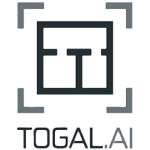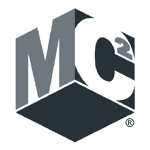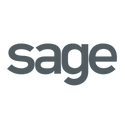How Preconstruction Teams Are Using AI to Build Better Projects

Preconstruction has always been about foresight, translating ideas into buildable realities through careful planning, smart strategy, and experience-driven decision-making. Today, a new player is joining the conversation: artificial intelligence - AI for construction.
From cost modeling to risk forecasting, AI tools like ChatGPT, Perplexity, and other large language models (LLMs) influence how preconstruction professionals think, plan, and collaborate.
At the core of this shift is a surprisingly simple idea: Better outcomes start with better questions.
Prompt engineering, the practice of crafting precise, effective questions for AI, is quickly becoming a new skill for forward-thinking professionals. Rather than asking AI to “do the estimating,” seasoned pros are using it to enhance early-stage brainstorming, sharpen communication with clients and designers, and test new ideas.
Asking the Right Questions: AI as a Strategic Partner
The quality of an AI tool’s output depends heavily on the quality of your input. For preconstruction professionals, that means learning how to ask questions that are specific, contextual, and aligned with project goals.
For instance, instead of asking, “What are value engineering strategies?” try asking, “What are high-impact value engineering options for a two-phase commercial office project with a tight site, mid-range finishes, and a $250 square foot target budget?”
With this more detailed question, you will receive answers more tailored to your project.
Used this way, AI in construction becomes a brainstorming partner. And when paired with your experience-based judgment, it can elevate the entire decision-making process.
Here are four categories of high-value prompts you can use in strategic planning and early project conversations:
1. AI in Construction for General Planning & Strategy
The earliest phases of a construction project are often the most ambiguous and influential. Before a single drawing is finalized or a budget is approved, preconstruction professionals are already navigating a maze of questions about feasibility, delivery methods, design intent, and cost.
AI excels at generating options, summarizing complex variables, and revealing strategies you might not have considered. AI can help you think bigger and faster.
For example, try this:
“What are potential cost-saving strategies for a 100,000 square foot light industrial project in a suburban market with limited subcontractor availability?”
Or:
“Compare the pros and cons of CMAR vs. design-build for a publicly funded healthcare facility with a fixed deadline and tight permitting schedule.”
In both cases, AI isn’t replacing your judgment. Instead, it helps you frame decisions, highlight considerations, and spark more informed conversations.
AI can help validate assumptions at the conceptual level. Ask it to model budget ranges based on similar project types or generate questions you might ask the owner during initial alignment meetings.
For example, you could ask AI, “What questions should I ask a client during early design to align on scope and cost expectations?”
At this stage, preconstruction professionals can utilize AI to broaden strategic thinking and accelerate discovery.
2. Risk Assessment & Mitigation
Construction risk is everywhere, from fluctuating material costs, unclear scopes, unpredictable weather, and incomplete documents. When you ask AI targeted, scenario-based questions, it can expose risks you may not have considered or help you communicate them more clearly.
For example, you can ask AI, “What are common cost escalation risks for a hospitality renovation project in a unionized market, and what are some early mitigation strategies?”
Or:
“What are potential red flags in a GMP contract that could create exposure for the general contractor during preconstruction?”
These prompts won’t just generate lists but will help you frame conversations around allowances, contingencies, long-lead items, and buyout strategies.
AI can also assist with contract clarity. For example, you could ask, “How can we structure preconstruction agreements to limit risk while maintaining flexibility for design development?”
Used this way, AI becomes a strategic partner in de-risking your approach, helping teams anticipate friction, allocate responsibility, and align stakeholders.
3. Value Engineering & Cost Optimization
Value engineering isn’t about cutting corners; it’s about making smart trade-offs that preserve design intent while improving performance, cost, or constructability. By prompting AI with project-specific constraints, preconstruction teams can explore a broader range of options without spending hours researching each one.
For example, you could ask, “What are high-impact value engineering opportunities for a Class A office building with high-end finishes, limited ceiling space, and a LEED Silver target?”
Or:
“Compare the lifecycle cost and first-cost implications of using VRF vs. chilled water systems in a 150,000 square foot mixed-use building.”
These prompts can bring to light nuanced insights, identify commonly overlooked options, or help teams communicate trade-offs. AI can also assist with formatting those options into owner-facing decision memos or meeting agendas. This approach saves research time, helps set expectations, and unlocks innovation during design.
AI can also support analysis of product alternatives. Try asking it, “What are durable, lower-cost alternatives to terrazzo flooring for a school project with high foot traffic and sustainability goals?”
Most importantly, using AI during value engineering conversations can shift the tone from reactive cost-cutting to proactive solution-finding.
4. Sustainability & Innovation
Whether a project aims for LEED certification, zero-energy status, or improved operational efficiency, preconstruction teams are expected to lead the conversation on what is possible.
For example, you could ask AI, “What are cost-effective sustainability strategies for a mid-rise multifamily project in a hot climate?”
Or:
“What materials offer both durability and embodied carbon reduction in a commercial retrofit?”
Rather than providing vague green suggestions, AI can compare systems, highlight relevant standards, and offer implementation examples. These insights can help you collaborate more effectively with design teams and align environmental strategies with budget realities.
On the innovation front, you might ask: “How are construction firms using AI or automation during preconstruction, and what emerging technologies should we be watching?”
These types of prompts keep your team informed and spark creative thinking. AI can also help identify how technologies such as 3D printing, modular construction, robotic layout tools, or AI takeoff tools could apply to your project.
From Prompts to Practice
As with any tool, AI for construction’s value depends on how well it’s used. In preconstruction, that means grounding AI prompts in real project data, goals, and constraints. The best results come from context-rich queries that mirror the kinds of strategic conversations you already have with your team or your client.
Here are a few best practices:
- Be specific. Include project type, location, budget range, and known constraints.
- Layer questions. Don’t stop at one prompt but follow up and refine.
- Cross-check responses. AI can hallucinate or miss critical details; always validate the answers with your expertise.
- Use prompts as a starting point, not a final decision. Think of AI as your brainstorming partner, not your project lead.
Firms that adopt this mindset will get more from AI, leading to faster ideation, sharper insights, and better alignment across disciplines.
AI in construction can supercharge estimators, planners, or project executives. The most successful technology adoption stories in construction will come from teams that learn to ask the right questions, apply the answers wisely, and stay curious about what’s possible.

-1.png?width=112&height=112&name=image%20(4)-1.png)














